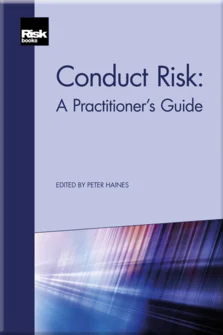An Overview of Conduct Risk
Paul Sharma
An Overview of Conduct Risk
Introduction
An Overview of Conduct Risk
How Does Conduct Risk Manifest and What Are Its Root Causes?
What Are the Driving Forces of and Who Owns Conduct Risk?
Scope and Ownership within the Business
Conduct Risk in Financial Services: Lessons from the Hospitality and Leisure Industry
Ethical Culture: What, Why and How?
Language and Conduct Risk: Limited Language – Big Blind Spots
An Anthropological Perspective on Conduct Risk
Identifying and Measuring Conduct Risk
Risk Appetite Setting and Modelling Conduct Risk
The Effect of Conduct Risk Losses on Reputation
Bringing the Customer Back to the Foreground: The End of Conduct Risk?
Managing Conduct Risk
Closing Comments on the Future of Conduct Risk
This chapter explains what conduct risk is and why it is important. It explores how approaches to conduct risk have changed over time, and explains from the point of view of different stakeholders how conduct risk may take on different meanings.
The first section sets out the basic concepts that are inherent in almost all approaches to defining and discussing conduct risk: conduct risk arises from the behaviour of insiders that has consequences for stakeholders.
The second section sets out the different stakeholder perspectives on conduct risk. These are based on the consequences that insider behaviour may have for key business or policy objectives of private and public sector stakeholders. In particular, it describes the prudential, reputational, consumer-protection and financial-stability perspectives from which insider conduct poses a risk of loss to a regulated firm, of damage to its reputation, goodwill or franchise, of harm to consumers or of disruption to financial stability.
The third section describes in more depth insider conduct as a risk of harm to consumers. It discusses the surprisingly difficult questions of
-
- who in the financial services
Copyright Infopro Digital Limited. All rights reserved.
As outlined in our terms and conditions, https://www.infopro-digital.com/terms-and-conditions/subscriptions/ (point 2.4), printing is limited to a single copy.
If you would like to purchase additional rights please email info@risk.net
Copyright Infopro Digital Limited. All rights reserved.
You may share this content using our article tools. As outlined in our terms and conditions, https://www.infopro-digital.com/terms-and-conditions/subscriptions/ (clause 2.4), an Authorised User may only make one copy of the materials for their own personal use. You must also comply with the restrictions in clause 2.5.
If you would like to purchase additional rights please email info@risk.net











